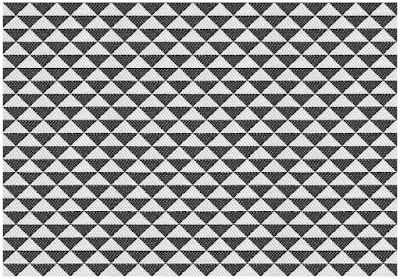Il segno distintivo sub iudice era ” LA TUA PELLE MERITA DI ESSERE TRATTATA BENE” per cosmetici e simili.
Il segno era stato rigettato in entrambi i gradi della sede amministrativa (UIBM e Commisisone dei ricorsi, art. 135 cpi).
Nè sortisce miglior esito in sede di legittimiutà con Cass. sez. 1 n° 37.697 del 23.12.2022, rel. Reggiani.
Tre sono i punti di interesse: il ruolo della Commissione dei ricorsi, la registrabilità di uno slogan come mnarchio e il rapprto tra l’art. 7 e l’art. 13 cpi.
1° PUNTO : “In materia di proprietà industriale, la Commissione dei ricorsi contro i provvedimenti dell’Ufficio Italiano Marchi e Brevetti (UIBM), prevista dal D.Lgs. n. 30 del 2005 art. 135, è un organo di giurisdizione speciale esclusiva di merito, che estende la sua cognizione a tutti i rapporti tra i richiedenti e l’UIBM che siano originati dall’attività amministrativa di tale Ufficio, e il suo operato non si risolve in un sindacato sulla legittimità degli atti contro cui è proposto ricorso, ma si sostanzia in una verifica della fondatezza delle richieste, afferenti a diritti soggettivi, che non sono state accolte dall’UIBM”, § 4.4.
Poco sopra a, § 4.3 aveva detto: <<in conclusione, la menzionata Commissione è un organo di giurisdizione speciale di merito, che estende la sua cognizione a tutti i rapporti tra richiedenti ed UIBM che abbiano origine dall’attività amministrativa dell’Ufficio. La Commissione, più che giudice dell’atto è giudice del rapporto, per cui la sua competenza resta modulata su tutto l’ambito in cui esercita funzione di controllo, essendo chiamata a verificare la pretesa del privato che è stata disconosciuta dall’UIBM>>.
2° PUNTO : << 10.4. La giurisprudenza dell’Unione ha, peraltro, maturato un consolidato orientamento in ordine alla possibilità di registrare, come marchio, slogan pubblicitari, il quale si colloca in perfetta sintonia con gli argomenti appena evidenziati.
Con riferimento a marchi composti da segni o indicazioni che sono utilizzati quali slogan commerciali, indicazioni di qualità o espressioni incitanti ad acquistare i prodotti o i servizi cui detto marchio si riferisce, la registrazione non è esclusa in ragione di una siffatta utilizzazione (Corte di giustizia, 4 ottobre 2001, C-517/99, punto 40; Corte di giustizia UE, 21 ottobre 2004, C-64/02, punto 41; Corte di giustizia UE, 6 luglio 2017, C-139/16, punto 28), ma, si precisa, devono essere utilizzati gli stessi criteri selettivi utilizzati per altri tipi di segni (Corte di giustizia UE, 6 luglio 2017, C-139/16, punto 28).
La registrazione di un marchio non può, dunque, essere esclusa a causa del suo uso elogiativo o pubblicitario, ma il segno deve, comunque, essere percepito dal pubblico di riferimento come un’indicazione dell’origine commerciale dei prodotti e dei servizi da esso designati.
La connotazione elogiativa di un marchio denominativo non esclude che quest’ultimo sia comunque adatto a garantire ai consumatori la provenienza dei prodotti o dei servizi da esso designati. Un siffatto marchio può contemporaneamente essere percepito dal pubblico di riferimento come una formula promozionale e come un’indicazione dell’origine commerciale dei prodotti o dei servizi (Corte di giustizia UE, 6 luglio 2017, C139/16, punto 29).
Ciò comporta che la sola qualificazione di un messaggio come slogan pubblicitario non comporta automaticamente che abbia anche quel carattere distintivo, proprio del marchio, che deve essere accertato perché si compia una valida registrazione.
10.5. Nel caso di specie, come già evidenziato, la Commissione ha ritenuto sussistente il carattere promozionale del marchio e, facendo corretta applicazione delle norme sopra menzionate, ha accertato se avesse anche carattere distintivo, e cioè se fosse in grado di ricondurre il prodotto e i servizi prestati proprio all’impresa che ne ha chiesto la registrazione, escludendo che tale carattere fosse esistente, ritenendo che le espressioni usate non fossero in grado di ricondurre proprio alla impresa che ne ha chiesto la registrazione.
10.6. Il secondo motivo di ricorso, con riferimento alle censure appena esaminate, deve pertanto essere respinto in applicazione del seguente principio di diritto: “In tema di marchio d’impresa, l’imprenditore ha diritto alla registrazione anche di uno slogan pubblicitario, ma l’espressione contenente il messaggio promozionale deve adempiere alla finalità distintiva ossia essere idoneo a distinguere i prodotti o i servizi offerti da quell’impresa” >>.
3° PUNTO : <<Dalla lettura combinata delle disposizioni contenute nel D.Lgs. n. 30 del 2005, emerge con chiarezza che l’art. 7 D.Lgs. cit. individua un requisito la cui assenza impedisce già in astratto di considerare un segno come marchio, perché non è idoneo atti a distinguere i prodotti o i servizi di un’impresa da quelli di altre imprese.
Il successivo art. 13 D.Lgs. cit. individua ipotesi in cui i segni in concreto perdono o acquistano capacità distintiva (rispettivamente, i segni divenuti di uso comune nel linguaggio corrente o negli usi costanti del commercio e i segni che, a seguito dell’uso che ne sia stato fatto, abbiano acquistato carattere distintivo) e contiene la specificazione di alcuni segni che sono senza dubbio privi del carattere distintivo (in quanto costituite esclusivamente dalle denominazioni generiche di prodotti o servizi
o da indicazioni descrittive che ad essi si riferiscono), riportando anche riferimenti esemplificativi.
Ovviamente la disposizione da ultimo menzionata non si sostituisce a quella precedente, contenuta nell’art. 7 D.Lgs. cit., più generale, che individua i requisiti per ottenere la registrazione di un marchio, né esaurisce tutte le ipotesi in cui si deve escludere il carattere distintivo del segno, ma contiene solo una elencazione non esaustiva delle ipotesi in cui tale carattere non può ritenersi esistente>>, § 10.1.




